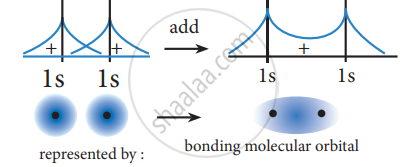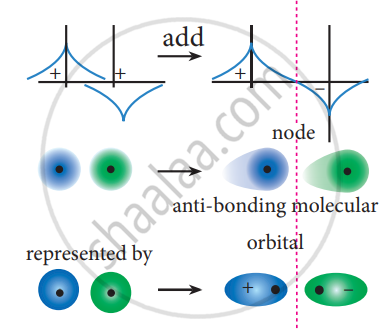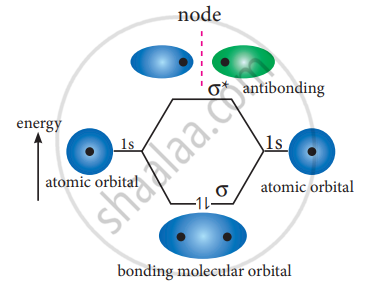Advertisements
Advertisements
Question
What do you understand by Linear combination of atomic orbitals in MO theory?
Solution
The wave functions for the molecular orbitals can be obtained by solving the Schrodinger wave equation for the molecule. Since solving the Schrodinger equation is too complex, approximation methods are used to obtain the wave function for molecular orbitals. The most common method is the linear combination of atomic orbitals (LCAO).
We know that the atomic orbitals are represented by the wave function ψ. Let us consider two atomic orbitals represented by the wave function ψA and ψB with comparable energy, combines to form two molecular orbitals. One is bonding molecular orbital `(ψ_"bonding")` and the other is antibonding molecular orbital `(ψ_"antibonding")` The wave functions for these two molecular orbitals can be obtained by the linear combination of the atomic orbitals ψA and ψB as below,
`(ψ_"bonding") = ψ_"A" + ψ_"B"`;
`(ψ_"antibonding") = ψ_"A" - ψ_"B"`;
The formation of bonding molecular orbital can be considered as the result of constructive interference of the atomic orbitals and the formation of anti-bonding molecular orbital can be the result of the destructive interference of the atomic orbitals. The formation of the two molecular orbitals from two is orbitals is shown below.
Constructive interaction:
The two 1s orbitals are in phase and have the same sign,


Destructive interaction:
The two orbitals are out phase


APPEARS IN
RELATED QUESTIONS
Give the total number of electrons around sulfur (S) in SF6 compound.
Assertion: Oxygen molecule is paramagnetic.
Reason: It has two unpaired electron in its bonding molecular orbital.
Discuss the formation of N2 molecule using MO Theory.
Which of the following statements is INCORRECT?
Which one of the following sets CORRECTLY represents the increase in the paramagnetic property of the ions?
What is the bond order of B2 molecule?
Of the ions Ti4+, Co2+ and Cr3+, ____________.
Which of the following molecules has bond order zero?
The correct statement with regard to \[\ce{H^+_2}\] and \[\ce{H^-_2}\] is:
Which element among the following does not form diatomic molecules?
